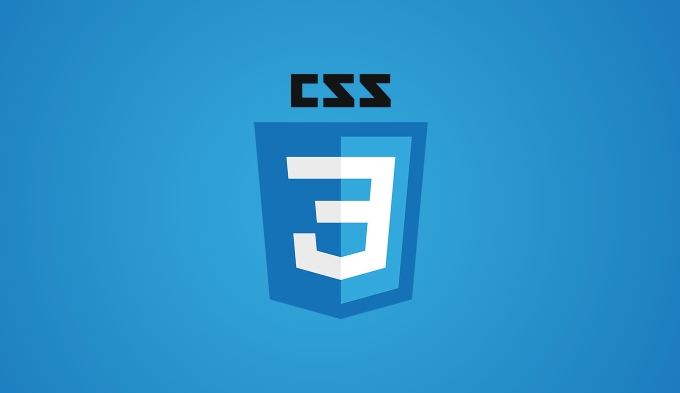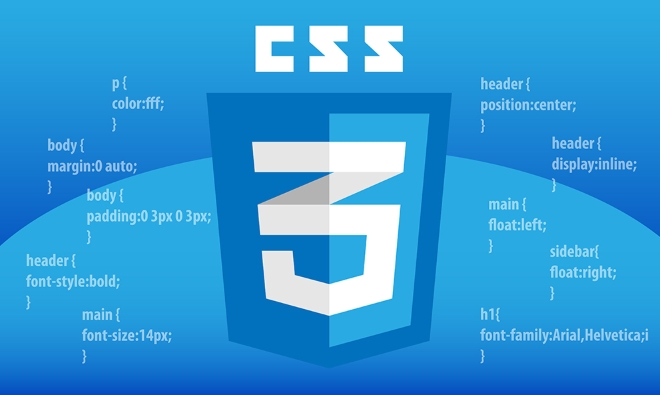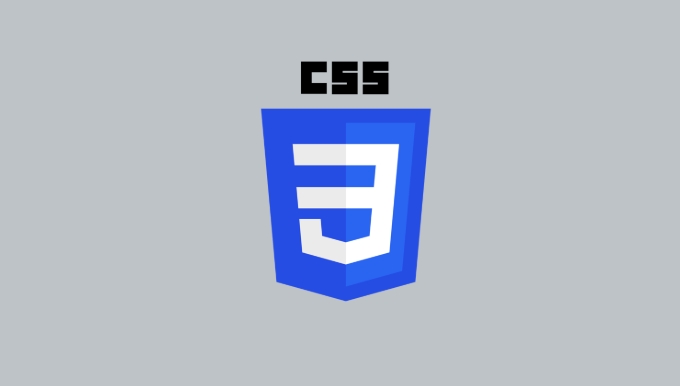The ineffectiveness of z-index is often due to the influence of the cascaded context. 1. The stacking context is the "space scope" of an element, and the stacking order of child elements is calculated independently; 2. The creation method includes setting positioning z-index, opacity is less than 1, transform, etc.; 3. z-index is only valid for positioning elements, and the levels cannot be directly compared when the parent-child level is in different contexts; 4. The browser comprehensively determines the stacking order based on the DOM order, positioning, layout method, etc.; 5. Practical problems such as the modal box is blocked, you need to check the context level and adjust the structure or z-index instead of blindly increasing the value.

z-index and stacking context in CSS are key concepts that control the order in which elements are stacked in the Z-axis direction. Many people have used z-index , but sometimes they find that it "does not take effect", which often ignores the role of the stacking context. This article will talk about how to really use them well.

What is a cascading context?
The stacking context can be understood as a "spatial range", within which the stacking order of all child elements is computed relative to each other.
There are several ways to create a new cascaded context:

- Set
positionnotstaticfor elements (such asrelative,absolute,fixed,sticky) and setz-indexvalue at the same time - Use
opacityless than 1 - Use
transform,filter,will-changeand other properties - Set
isolation: isolate
Once a parent element forms its own stacking context, z-index between its child elements can only be compared in that context and will not directly compete with the external hierarchy.
z-index usage tips
z-index is the most familiar property that controls stacking order, but it is only valid for positioning elements (i.e., setting non- static position ).

Common misunderstandings:
- Setting
z-indexto a normaldivdirectly has no effect - When the parent and child elements are in different stacking contexts, the parent class as a whole determines the upper limit of the child's position.
Suggested practices:
- Always use
z-indexin conjunction withposition: relativeor other positioning methods - Try to keep it in one context when controlling the hierarchy to avoid hierarchy structures that are too deep.
- Avoid using oversized values ??such as
z-index: 999999, which can easily get out of control and be difficult to maintain.
How is the order of stacking determined?
When a browser renders a page, it does not only look at z-index , but determines which elements are displayed on it based on a set of rules. This rule includes:
- DOM order of elements
- Are positioning and
z-indexset? - Does it belong to a different stacking context
- Whether to use
flex,gridand other layout methods
The order is as follows (from bottom to top):
- Background and borders
- Block-level elements in normal streams
- Floating elements
- Positioning elements (sorted by
z-index)
If you find that the two positioning elements are not stacked as expected, it is most likely because one is wrapped in the other stacking context.
Issues to be noted in practical applications
In actual development, common problems include the modal box being blocked, the navigation bar menu disappearing behind the carousel map, etc., which are related to the stacking context.
For example:
You have a pop-up component that uses position: fixed and sets z-index: 1000 , but a carousel image on the page uses transform: translateX() , which will cause the container where the carousel image is located to generate a new cascade context, causing the pop-up window to be blocked.
The solution at this time is to check and unify the context level of both, or adjust z-index appropriately, instead of blindly adding numbers.
Basically that's it. Understanding the relationship between the stacking context and z-index can help you more stably control the stacking order of page elements.
The above is the detailed content of Working with z-index and stacking contexts in css. For more information, please follow other related articles on the PHP Chinese website!

Hot AI Tools

Undress AI Tool
Undress images for free

Undresser.AI Undress
AI-powered app for creating realistic nude photos

AI Clothes Remover
Online AI tool for removing clothes from photos.

Clothoff.io
AI clothes remover

Video Face Swap
Swap faces in any video effortlessly with our completely free AI face swap tool!

Hot Article

Hot Tools

Notepad++7.3.1
Easy-to-use and free code editor

SublimeText3 Chinese version
Chinese version, very easy to use

Zend Studio 13.0.1
Powerful PHP integrated development environment

Dreamweaver CS6
Visual web development tools

SublimeText3 Mac version
God-level code editing software (SublimeText3)

Hot Topics
 How can I include CSS only on some pages?
Jun 11, 2025 am 12:01 AM
How can I include CSS only on some pages?
Jun 11, 2025 am 12:01 AM
There are three ways to selectively include CSS on a specific page: 1. Inline CSS, suitable for pages that are not frequently accessed or require unique styles; 2. Load external CSS files using JavaScript conditions, suitable for situations where flexibility is required; 3. Containment on the server side, suitable for scenarios using server-side languages. This approach can optimize website performance and maintainability, but requires balance of modularity and performance.
 Flexbox vs Grid: Understanding the Key Differences in CSS Layout
Jun 10, 2025 am 12:03 AM
Flexbox vs Grid: Understanding the Key Differences in CSS Layout
Jun 10, 2025 am 12:03 AM
Flexboxisidealforone-dimensionallayouts,whileGridsuitstwo-dimensional,complexlayouts.UseFlexboxforaligningitemsinasingleaxisandGridforprecisecontroloverrowsandcolumnsinintricatedesigns.
 Creating an Auto-Closing Notification With an HTML Popover
Jun 10, 2025 am 09:45 AM
Creating an Auto-Closing Notification With an HTML Popover
Jun 10, 2025 am 09:45 AM
The HTML popover attribute transforms elements into top-layer elements that can be opened and closed with a button or JavaScript. Popovers can be dismissed a number of ways, but there is no option to auto-close them. Preethi has a technique you can u
 What is 'render-blocking CSS'?
Jun 24, 2025 am 12:42 AM
What is 'render-blocking CSS'?
Jun 24, 2025 am 12:42 AM
CSS blocks page rendering because browsers view inline and external CSS as key resources by default, especially with imported stylesheets, header large amounts of inline CSS, and unoptimized media query styles. 1. Extract critical CSS and embed it into HTML; 2. Delay loading non-critical CSS through JavaScript; 3. Use media attributes to optimize loading such as print styles; 4. Compress and merge CSS to reduce requests. It is recommended to use tools to extract key CSS, combine rel="preload" asynchronous loading, and use media delayed loading reasonably to avoid excessive splitting and complex script control.
 How to use Lotties in Figma
Jun 14, 2025 am 10:17 AM
How to use Lotties in Figma
Jun 14, 2025 am 10:17 AM
In the following tutorial, I will show you how to create Lottie animations in Figma. We'll use two colorful designs to exmplify how you can animate in Figma, and then I'll show you how to go from Figma to Lottie animations. All you need is a free Fig
 Breaking Boundaries: Building a Tangram Puzzle With (S)CSS
Jun 13, 2025 am 11:33 AM
Breaking Boundaries: Building a Tangram Puzzle With (S)CSS
Jun 13, 2025 am 11:33 AM
We put it to the test and it turns out Sass can replace JavaScript, at least when it comes to low-level logic and puzzle behavior. With nothing but maps, mixins, functions, and a whole lot of math, we managed to bring our Tangram puzzle to life, no J
 External vs. Internal CSS: What's the Best Approach?
Jun 20, 2025 am 12:45 AM
External vs. Internal CSS: What's the Best Approach?
Jun 20, 2025 am 12:45 AM
ThebestapproachforCSSdependsontheproject'sspecificneeds.Forlargerprojects,externalCSSisbetterduetomaintainabilityandreusability;forsmallerprojectsorsingle-pageapplications,internalCSSmightbemoresuitable.It'scrucialtobalanceprojectsize,performanceneed
 Does my CSS must be on lower case?
Jun 19, 2025 am 12:29 AM
Does my CSS must be on lower case?
Jun 19, 2025 am 12:29 AM
No,CSSdoesnothavetobeinlowercase.However,usinglowercaseisrecommendedfor:1)Consistencyandreadability,2)Avoidingerrorsinrelatedtechnologies,3)Potentialperformancebenefits,and4)Improvedcollaborationwithinteams.






